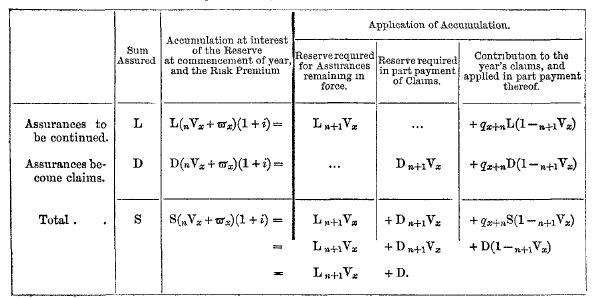No CrossRef data available.
Published online by Cambridge University Press: 18 August 2016
The practice of making a comparison between the mortality actually experienced by a life assurance society during a given period of time, and that which might have been expected (to use the term in its professional sense) according to the mortality table on which the periodical valuations are based, has now become so general, that no apology is needed for drawing further attention to the subject, if it can be shown that the method usually employed at present is not altogether satisfactory.
page 156 note * At Mr. Hardy's suggestion, a table is appended in further illustration, S being the sum assured at the age, and L = px+n S, D=qx+n S, so that S = L + D.

page 156 note † By the use of the words “profit” and “loss”, as being more convenient than valuation surplus or deficiency, it is not intended to be implied that the one is necessarily to be divided or the other to cause alarm, seeing that attention must always be given to the data of the calculations and the special circumstances in each case, such as the influence, for instance, to be attributed to selection on one side or the other.
page 164 note * For the sake of an example, taking the table for a single age given on p. 159, the proportion of strain, as estimated is 47·6 per-cent, and for the supposed actual results 36·7, 73·9, 37·0, and 76·5 per-cent respectively. To compare the four suppositions one with another, the respective percentages the actual figures are of the estimated should be found, and it will be seen that the relation is as follows:—

the last column being obtained either directly from the strains, or from a multiplication of the other two.
page 168 note * See Journal xiii, 20.